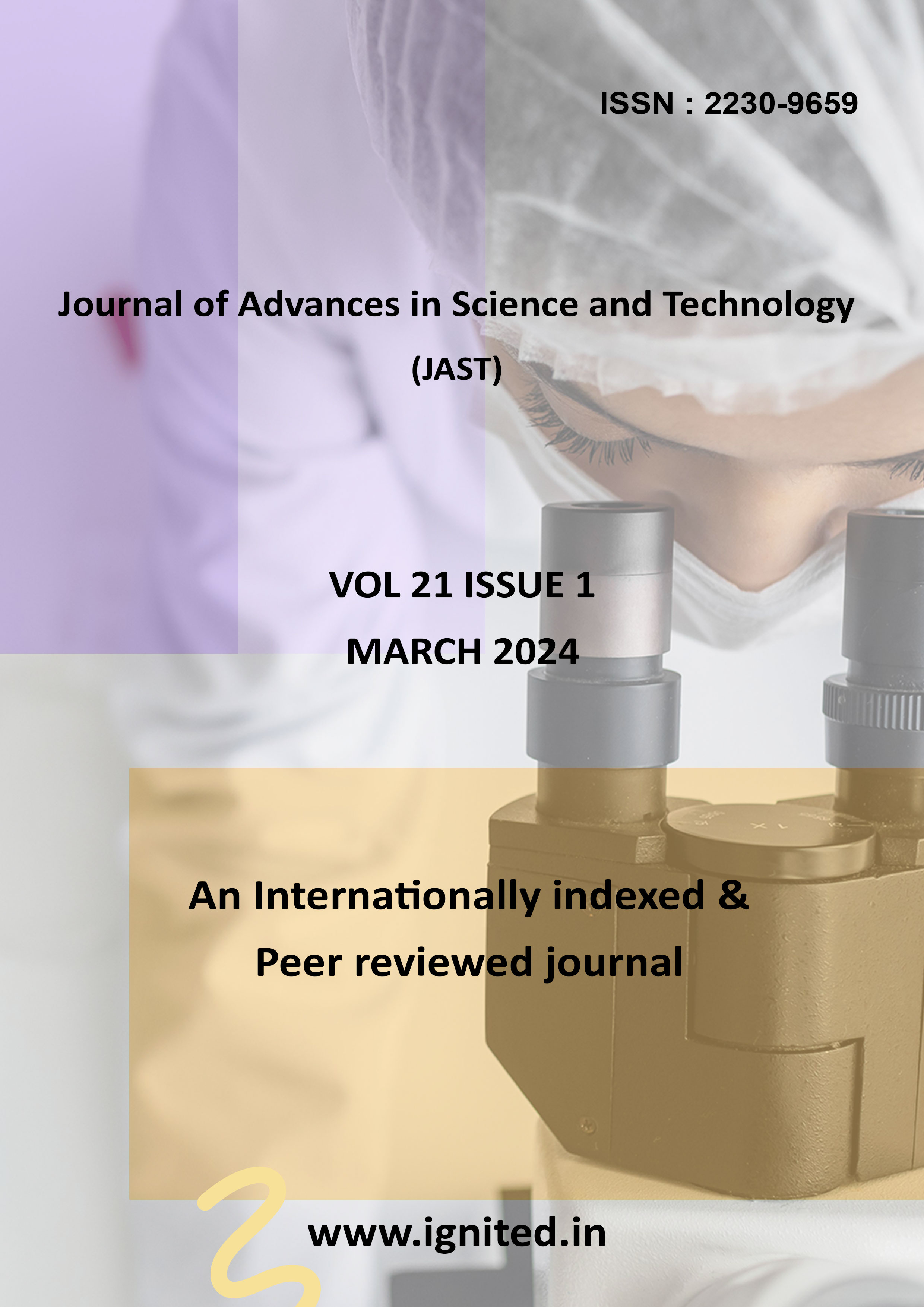A Study on Mutation Breeding for Crop Improvement
DOI:
https://doi.org/10.29070/3yznvz13Keywords:
Mutation, Crop, improvement, agricultureAbstract
Despite the tremendous changes happening in the world of agriculture, food insecurity is still an issue. To meet the 70% increase in food consumption by 2050 predicted by the global population, it is essential to improve crop varieties in order to make them more resistant to climate change, efficient with inputs, provide more nutrient-dense food, and operate better in different agro-ecosystems without negatively impacting the environment. A total of 3,362 mutant plant kinds have been published from more than 75 different nations as a result of the very popular breeding method known as mutation breeding, sometimes known as induced mutation. Genetic diversity in crops has been enhanced by the application of physical, chemical, and hybrid mutagens. Of these, 82 are indigenous to Africa and 959 are native to Asia, the Pacific, Australia, Europe, Latin America, and North America. Other notable crop types that have resulted from mutation breeding and forced mutation include 1602 cereals, 501 legumes, and 86 oil seed mutant. Raising agricultural productivity and ending global hunger, this method improves quantitative and qualitative characteristics across a wide range of crops. Developments in biotechnology, genetics, and plant breeding have enabled this improvement.
Downloads
References
[Ahloowalia B.S, Maluszynski M., Nichterlein K.(2004). Global impact of mutation-derived varieties, Kluwer Academic Publishers. Printed in the Netherlands. Review Euphytica 135: 187–204
Altenburg, E. and L. S. Browning (1961). The relatively high frequency of whole-body mutations compared with fractional induced by X-rays in Drosophila sperm. Genetics 16: 203-212.
Anonymous (1995). Bureau of Economic and Agricultural Statistics, Bangkok
Anonymous (1977). Manual on Mutation Breeding (Second Edition), Technical Reports Series, No. 119. Joint FAO/IAEA Division of Atomic Energy in Food and Agriculture, International Atomic Energy Agency, Vienna, Austria.;288-290.
Ashikari M, Sasaki A, Eunuch-Tanaka M (2002). Loss-of-function of a rice gibberellin biosynthetic gene, GA20 oxidase (GA20ox-2), led to the rice „green revolution‟. Breed Sci 52:143–15
Awan MA (1991). Use of induced mutations for crop improvement in Pakistan. Plant Mutation Breeding for Crop Improvement 1:67-72.
Belfield EJ, Gann X, Methane A(2012). Genome-wide analysis of mutations in mutant lineages selected following fast-neutron irradiation mutagenesis of Arabidopsis thaliana . Genome Res 22:1306–1315
Branch WD (2002). Variability among advanced gamma irradiation induced large-seeded mutant breeding lines in the „Georgia Brown‟ peanut cultivar. Plant Breeding, 121: 275.
Chakrabarti SN(1995). Mutation breeding in India with particular reference to PNR rice varieties. Journal of Nuclear Agriculture and Biology. 24:73-82.
Devlin Kuyek (2002). Genetically Modified Crops in Africa: Implications for Small Farmers
De Varies H (1901). Die mutations theories, Leipzig. (State V)
Dong C, Dalton-Morgan J, Vincent K, Sharp P (2009). A modified TILLING method for wheat breeding. Plant Genome 2:39–47
Gómez-Pando L, Eguiluz A, Jimenez J, Falconí J, Aguilar EH (2009). Barley (Hordeun vulgare) and kiwicha (Amaranthus caudatus) improvement by mutation induction in Peru. Induced Plant Mutations in the Genomics Era, Food and Agriculture Organization of the United Nations, Rome;371-4.
Gowda MC, Nadaf HL, Sheshagiri R (1996). The role of mutations in intraspecific differentiation of groundnut (Arachis hypogaea L.). Euphytica. 90: 105-113.
Greene EA, Codomo CA, Taylor NE (2003). Spectrum of chemically induced mutations from a large-scale reverse-genetic screen in Arabidopsis. Genetics 164:731–740
Hancock CN, Zhang F, Floyd K(2011). The rice miniature inverted repeat transposable element mPing is an effective insertional mutagen in soybean. Plant Physiol 157:552–562
Harloff HJ, Lemcke S, Mittasch J(2012). A mutation screening platform for rapeseed ( Brassica napus L.) and the detection of sinapine biosynthesis mutants. Theor Appl Genet 124:957–969
Jain SM (2002) . A review of induction of mutations in fruits of tropical and subtropical regions. Acta Horticult 575:295–302
Jain SM (2010a). In vitro mutagenesis in banana (Musa spp.) improvement. Acta Horticult 879:605–614
Jankowicz-Cieslak J ,Thomas HT, Jochen K , Bradley JT (Editors ,2017). Biotechnologies for Plant Mutation Breeding, Protocols; Library of Congress Control Number; © International Atomic Energy Agency ISBN 978-3-319-45019-3
Kale MD, Mouli C, Murty GS, Rao MV (2007). Development of a new groundnut variety 'TG-26' by using induced mutants in cross breeding
Kharkwal MC, Nagar JP, Kala YK. BGM (2005). A high yielding chickpea (Cicer arietinum L.) mutant variety for late sown condition in north western plain zone of India. The Indian Journal of Genetics and Plant Breeding ; 65(3):229-30.
Khattak, G. S. S., M. Ashraf, R. Zamir, I. Saeed (2007). High yielding desi chickpea (Cicer arietinum L.) variety “NIFA-2005”. Pak. J. Bot., 39 (1): 93-102.
Kleinhofs A , Owais W, Nilan R (1978). Azide; Mutation Research 55, 165–195.
Kozgar MI, Khan S(2009). Genetic improvement of chickpea through induced mutation. Journal of Phytology;1(6).
Maluszynski M (2001). Officially released mutant varieties–the FAO/IAEA database. Plant Cell Tiss Org Cult 65:175–177
Maruyama K, Araki H, Kato H (1991). Thermosensitive genetic male sterility induced by irradiation. Rice genetics II; 227-35.
Mashenkov A (1986). Induced mutation process as a source of new Mutants; Maize Genetics Cooperation newsletter 60, 70-71.
Mba C (2013). Induced mutations unleash the potentials of plant genetic resources for food and agriculture. Agronomie 3:200–231
Mba C, Afza R, Jain SM (2007). Induced mutations for enhancing salinity tolerance in rice. In: Jenks MA, Hasegawa PM, Jain SM (eds) Advances in molecular breeding towards drought and salt tolerant crops. Springer, Berlin, pp 413–454






